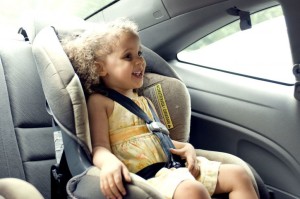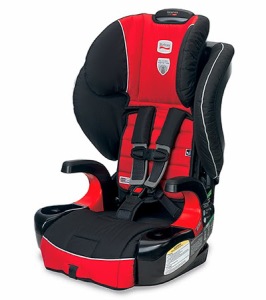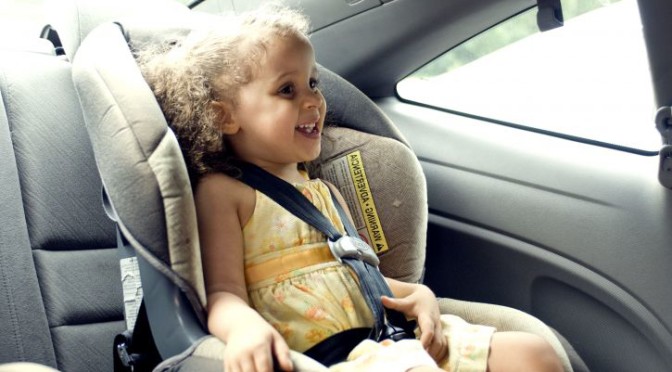
If you’re like most parents of an 8-10 year old, you’re probably close to the age–or already at the age–where your kids have started asking you to skip the booster seat and use the adult seat belt, just like Mom or Dad. Or perhaps you’re already letting them. Or if you’re not, they’re sure to tell you that their friends’ parents are letting their friends use seat belts without car seats. And if their friends can do it, surely your kids are ready too, right?
The truth of the matter is that your child isn’t the one who can tell you when s/he’s physically and psychologically ready to use an adult seat belt. You’ve got to make that call. And unfortunately, plenty of parents make the wrong call all over the country every day for a range of reasons. Some do it because their parents did when they were young, and they survived, so it can’t be that bad, right? Other parents might do it because their kids seem mature, or because they’re simply tired of hearing their kids ask. But none of these are the kinds of reasons that keep our kids safe. And this blog is all about keeping kids safe.
So how do you know if your kids are ready to ditch the car seats and use the adult seat belts?
Why don’t we look at the question from the other direction? Here are 5 signs that your child simply isn’t ready to use the adult seat belt, and that s/he should really still be in a child seat, whether that’s a forward-facing convertible or combination seat or a booster seat.
5 signs your child still needs a booster seat
1. The shoulder belt doesn’t sit in the middle of your child’s shoulder.
When sitting in a vehicle’s seat, does the shoulder belt (the top part of the seat belt) sit in the center of your child’s shoulder (e.g., halfway between your child’s neck and the top of your child’s arm)? If it doesn’t, your child’s not ready for the seat belt alone. Why? Because the belt can’t protect your child well if it’s not positioned over the shoulder. If the belt runs high, which it usually does when a child’s not big enough to use it, it could instead dig into your child’s neck in a crash, causing serious injuries.
2. The lap belt doesn’t sit low on your child’s thighs.
When sitting in a vehicle’s seat, does the lap belt (the lower part of the seat belt) sit on your child’s thighs (about where the pants pockets would be)? If it doesn’t, that’s another sign you should bring back the booster. Why? Because again, the belt won’t protect your child well if it’s not low on the thighs. If the belt runs high, which it tends to do again when a child’s too small to use it, it can sit on the stomach and cause devastating internal injuries in a collision. Children are also liable to slide right under the lap belt (called “submarining”) and fly unrestrained through the vehicle in a collision.
3. Your child slumps instead of sitting at the bight.
The bight of a vehicle’s seat is where the top and bottom cushions of the seat connect. It’s where your bottom touches if you’re big enough to use a seat. If your child’s not big enough to use an adult seat belt, or rather, the vehicle’s seat itself, your child will probably slouch and sit against the lower cushion with his or her back slumped against the back of the seat. This is dangerous for the reasons I wrote about above; it dramatically increases submarining odds, and the last thing you want your child to do in a collision is fly out of a seat belt.
4. Your child’s knees bend before the bend in the seat, or your child’s feet don’t touch the vehicle floor.
Either of these signs is another clear one that your child’s not big enough for the vehicle’s seat. If your child’s not big enough for the seat, s/he’s not big enough for the seat belt. Again, we don’t want submarining. We want surviving.
5. Your child can’t sit up straight, or plays with the seat belt, or is constantly moving from side to side, or is just really immature when out of a car seat.
This one’s perhaps the easiest factor to spot, but is the one most parents seem to overlook. If your child really seems to have trouble sitting safely in a vehicle seat, it doesn’t matter if s/he passes all of the other tests; s/he’s not ready to sit without a booster seat. The best safety systems do nothing if they aren’t used, and if your child won’t sit still and sit up, the seat belt won’t save him or her in a collision.
If all this advice looks familiar, it’s because it’s basically the 5-step test rewritten to show you what it looks like when a child isn’t passing it. Don’t rush to get your child out of a booster or combination seat and into the adult seat belt; some things are worth waiting for, and developmental readiness is one of them!
OK, you’ve convinced me Mike. What are some good booster seats?

Any of the booster seats I recommend here is a good one. However, my absolute favorites are seats that keep kids safely restrained for as long as possible, which is why my go-to recommendations are the Britax Frontier G1.1 (formerly called the Frontier 90) and Britax Pinnacle G1.1 (formerly called the Pinnacle 90).
These seats are great because they’re not only designed well enough to help your kids booster until they’re truly ready for the adult seat belt (which for most kids is around 10 to 12 years old), they’re also excellent forward-facing seats with 9-year lifespans, which means you can potentially use them from when a child’s 4 or 5 (which is when I recommend switching from rear-facing to forward-facing) until a child no longer needs a car seat at all! It doesn’t get any better than that, and it’s a huge money saver over the years.
 If you find my information on best practices in car and car seat safety helpful, you can do your shopping through this Amazon link. Canadians can shop here for Canadian purchases. Have a question or want to discuss best practices? Join us in the forums!
If you find my information on best practices in car and car seat safety helpful, you can do your shopping through this Amazon link. Canadians can shop here for Canadian purchases. Have a question or want to discuss best practices? Join us in the forums!

